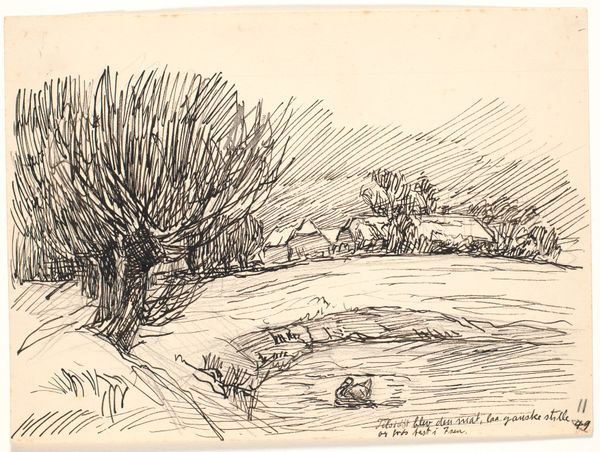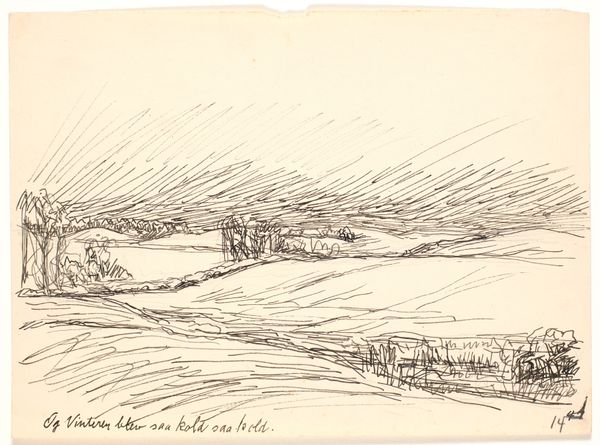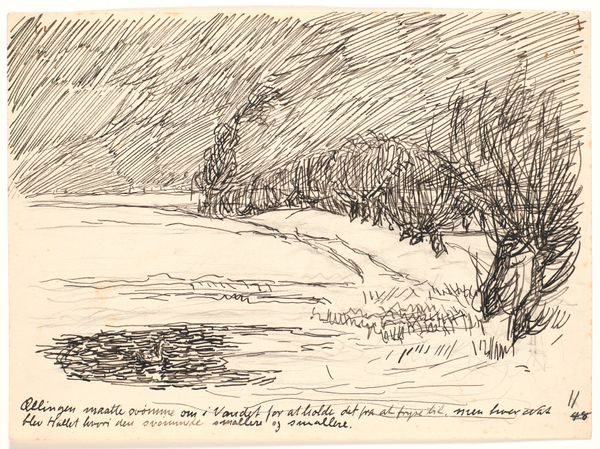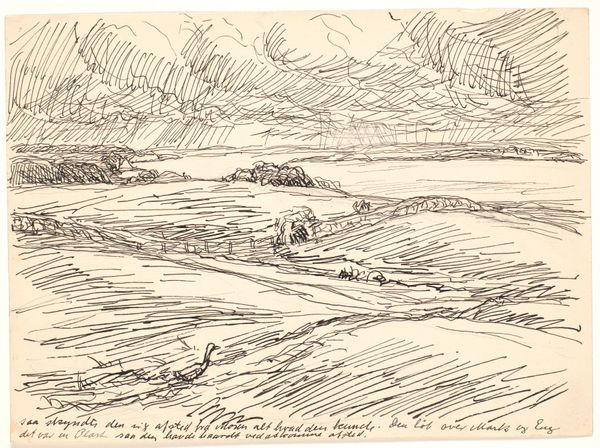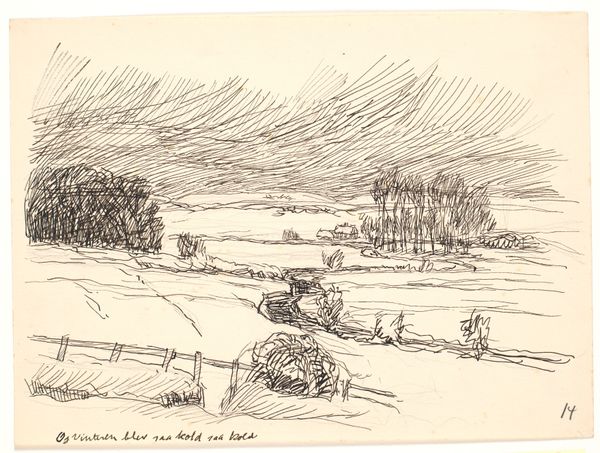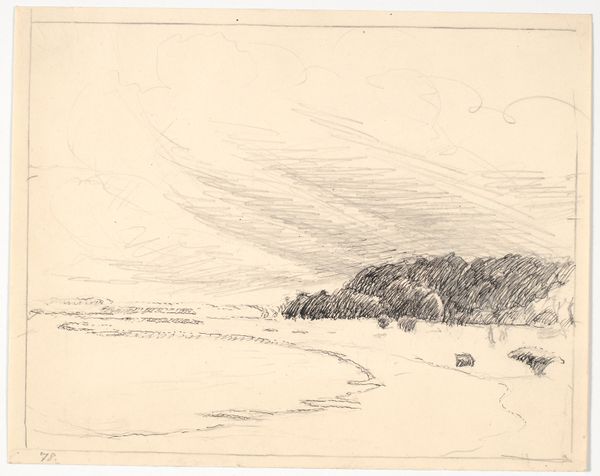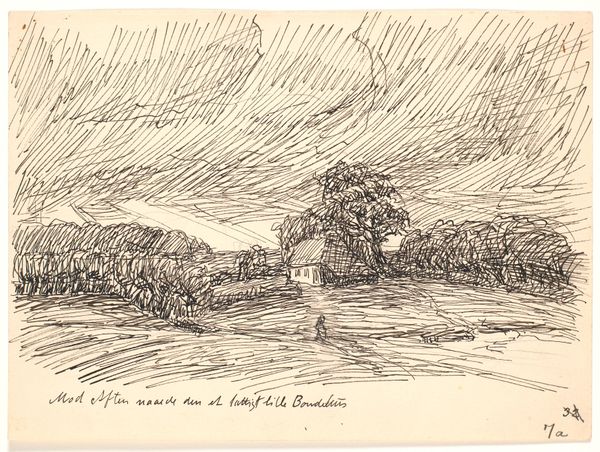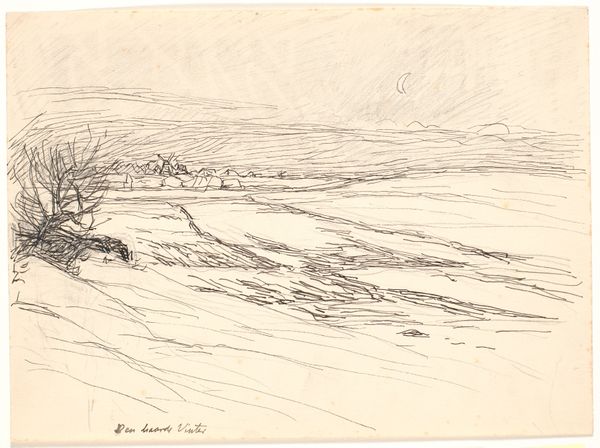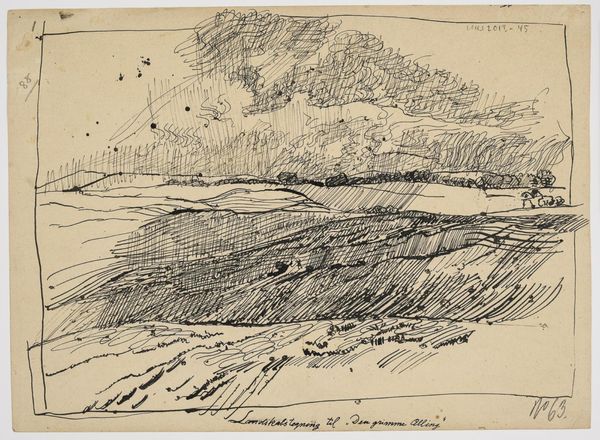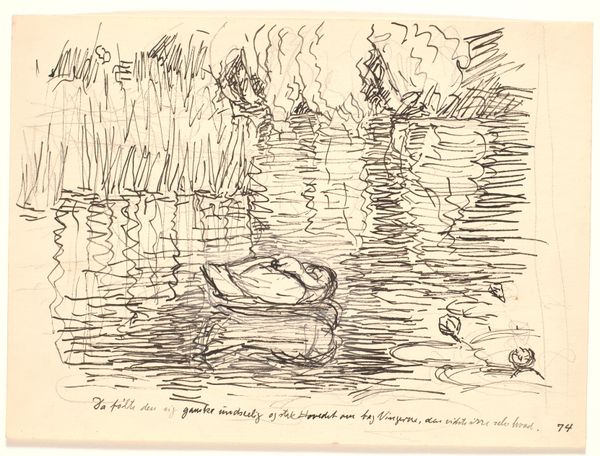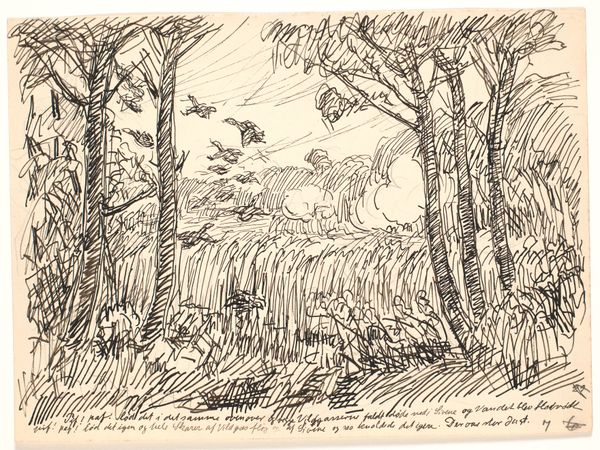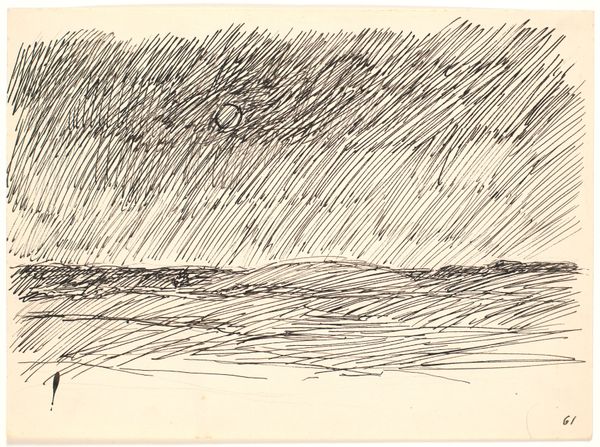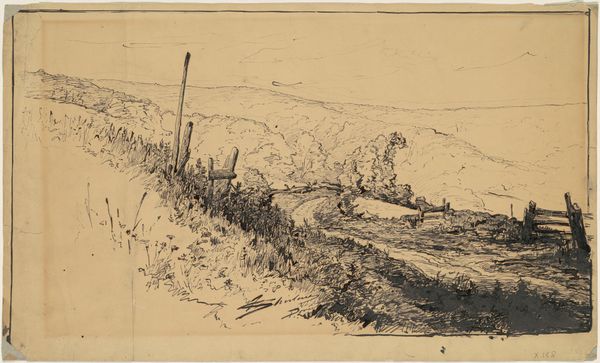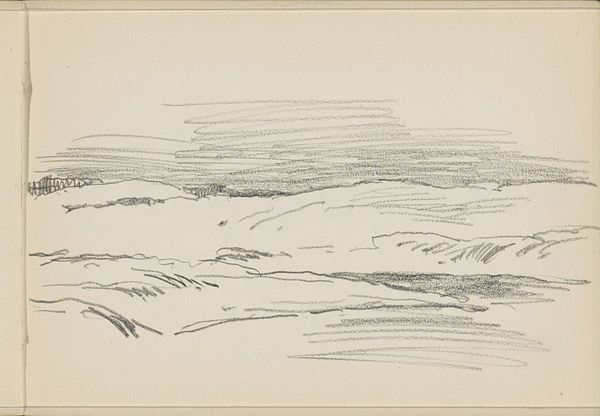
drawing, ink, pen
#
drawing
#
pen drawing
#
pen illustration
#
pen sketch
#
landscape
#
ink line art
#
personal sketchbook
#
ink
#
ink drawing experimentation
#
pen-ink sketch
#
thin linework
#
line
#
pen work
#
sketchbook drawing
#
pen
Dimensions: 247 mm (height) x 338 mm (width) (bladmaal)
Editor: This pen and ink drawing, "Men det vilde blive alt for bedrøveligt..." by Fritz Syberg, was made in 1928. The overwhelming feeling I get is bleakness, with that oppressive sky of lines and the lonely little house. What stands out to you about this piece? Curator: The immediate thing that strikes me is the process itself – the sheer labor involved in creating such a dense atmosphere with simple pen strokes. Think about the repetitive action, the physical act of mark-making to build up this feeling of… what did you say? Bleakness. This wasn't a quick sketch; there's a commitment here, a devotion to the material itself. How does this repetitive use of simple materials evoke the sense of desolation you noted? Editor: I think it's that relentless repetition. It’s almost mechanical, like the artist is trying to exhaust the subject through the sheer force of the line. It feels like a reflection of the monotonous hardship of rural life maybe? Curator: Precisely. And consider the social context: 1928, rural Denmark. What kind of labor was common then? Who had access to leisure, to creating art like this? The drawing itself, though seemingly simple, represents a tension between the act of labor and the depiction of labor's impact on the landscape. What does the artist’s commitment to representing labor tell us about artmaking as its own labor? Editor: I see what you mean. The creation *is* work. The value of art isn’t just in the final image, but in the artist's own investment, the hours spent and the conscious effort that went into producing it. Curator: Exactly! By examining the means of production—the materials, the technique, the historical and cultural setting—we gain a richer understanding of the artwork's meaning and significance, beyond just its aesthetic qualities. Editor: I never thought about it that way. It’s fascinating to see the landscape transformed by considering labor in its creation!
Comments
No comments
Be the first to comment and join the conversation on the ultimate creative platform.
